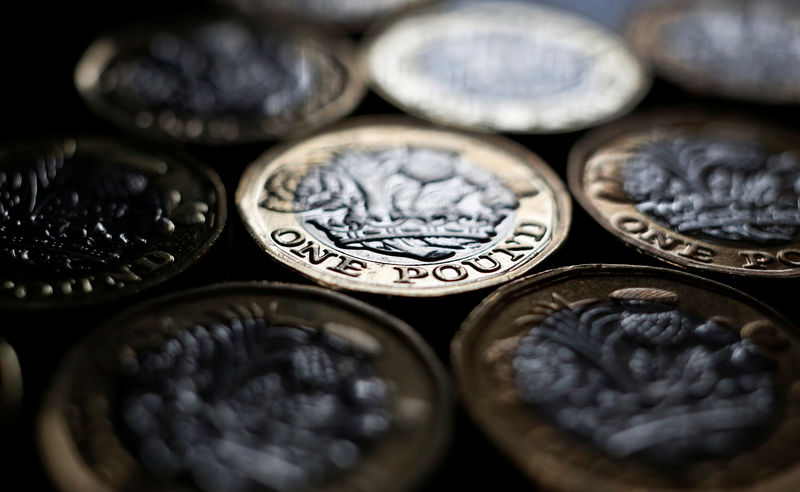By Samuel Indyk
Investing.com – The pound has had a mixed year in 2021. The currency was one of the best performing in the G10 at the start of the year as the UK had one of the most advanced vaccination programmes in the world, and as the UK and EU agreed a Brexit trade agreement at the end of 2020.
However, ongoing Brexit troubles, a muddling Bank of England, and stubbornly high COVID cases weighed on Sterling in the second half of the year and the currency is set to end the year with slight losses against the US Dollar and gains against the Euro.
Key Themes For 2022
A number of the themes that were dominant in 2021 look set to continue into 2022 with Brexit, the Bank of England, Omicron, inflation, and potential government turmoil all set to play a part.
Brexit
At the end of 2020, the UK and European Union announced a new trade and cooperation agreement that set out arrangements in areas such as goods and services, intellectual property, aviation, fisheries and law enforcement. The agreement prompted a rally in the pound at the start of 2021 but the UK has since signalled it could suspend parts of the Brexit deal for Northern Ireland, known as the protocol.
The protocol was implemented to prevent checks along the border between Northern Ireland, which is part of the UK, and the Republic of Ireland, part of the EU. However, since it was put into effect, the UK said the protocol represented a compromise by the UK and that the EU was enforcing border checks from goods coming from England, Scotland, and Wales too rigidly.
“Next year the focus will continue on post-Brexit trading arrangements, particularly over the Northern Ireland protocol,” said ITC Markets Europe and Americas Head of FX & Macro Analysis Robert Hoodless. “The expectations are for a conclusion on these matters in Q1, but the market may not be easily scared on these matters having experienced years of headlines on the matter.”
Bank of England
The Bank of England became one of the first major central banks to raise its interest rate and begin to remove the emergency stimulus that had been in place since the start of the pandemic. On 16th December, the Old Lady of Threadneedle Street voted to increase the interest rate by 15 basis points to 0.25% and, with little fanfare, allowed for the conclusion of the current quantitative easing programme.
The focus for 2022 will be on how many more interest rate hikes are expected throughout the year.
“The pressures we still see building domestically within the labour market, in services, prices, inflation and so forth, need to be addressed by somewhat tighter policy and a somewhat higher bank rate,” the Bank of England’s Chief Economist Huw Pill said on the day after the decision.
Markets are currently pricing in around 80 basis points of tightening throughout 2022, or the equivalent of about three interest rate hikes.
Inflation
If the Bank of England does decide to raise interest rates three times in 2022, it will be because they fear inflation could spiral out of control.
“The trend that everyone is watching in 2022 is inflation,” Justin Grossbard, Co-Founder and Chief Editor at Compare Forex Brokers told Investing.com. “With quantitative easing increasing demand while supply chains are stretched it appears inevitable that inflation will increase, forcing interest rate hikes to be considered.”
The Bank of England’s latest Monetary Policy Report from November showed that the central bank expected inflation to peak in the Spring of 2022, before falling as the impact of higher oil and gas prices begins to fade.
However, the central bank saw inflation, as measured by the consumer price index, peaking at around 5%. By November, CPI had already reached 5.1%.
Pandemic – Omicron
The evolution of the pandemic will be another factor to consider for the pound in 2022. The Omicron variant is currently the dominant strain of COVID-19 in the UK with daily case numbers reaching record levels, far higher than at any other point during the pandemic.
The hope is that Omicron causes less severe disease than previous dominant variants, such as Delta or the original strain.
If that is not the case, then the UK looks set for additional social restrictions with Prime Minister Boris Johnson not ruling out more lockdowns.
On the outlook for the pound, Newsquawk Senior Analyst Danny Baker thinks Omicron and the pandemic could continue to be a key factor to look out for in 2022.
“Much depends on the evolution of the pandemic with Omicron adding a new/different dimension to the Delta variant (not to mention any other mutations or strains of the virus that emerge),” Baker told Investing.com.
Government Turmoil
The final piece of the jigsaw that pound traders will have to navigate in 2022 will be whether Prime Minister Johnson’s Conservative Party can see out the current turmoil.
In December alone, Johnson has faced a rebellion in parliament of over 100 of his MPs over new COVID regulations and the Conservative Party has lost a by-election in North Shropshire to the Liberal Democrats, a seat the Tories had held for almost 200 years.
The election was called after Conservative MP Owen Paterson resigned after being found to have breached paid advocacy rules by the Commons Select Committee on Standards.
“The longevity of PM Johnson heading a Conservative majority is another matter worth considering,” ITC’s Hoodless added. “A replacement waits in the wings, in the form of UK Chancellor of the Exchequer Sunak. Mr Sunak may well differ from PM Johnson’s ‘boosterism’ strategy, and look to tax and spend less than current government policy prescribes. The Chancellor is also known for a more Thatcherite intention of deregulation and a freeing from European rules. Such a political change later on in the year may have implications for the pound.”
